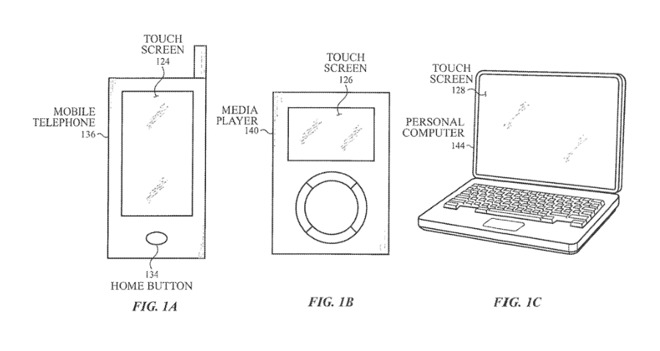A new Apple patent puts Touch ID anywhere on a device's display

What you need to know
- A new patent describes identification via in-screen technology.
- The patent appears to suggest Touch ID could work anywhere.
- Many Android phones already have in-display fingerprint sensors.
A new patent appears to suggest that Apple could be working on technology that would allow Touch ID to be used anywhere on a device's display.
US Patent No 10,541,280, "OLED based touch sensing and user identification," was spotted by Apple Insider and it mentions OLED screens that could detect a user based on "the reflected light or spectral 'fingerprint' detected by the plurality of OLED."
The patent points to capacitive touch sensors being used in the first instance, but with new optical sensors being used to detect what Apple calls "finer details."
Approximate touch location can be determined by capacitive touch sensors, and one or more finer details can be resolved by optical touch sensors. The touch screen can include a spatial filter configured to focus light emitted from the OLEDs and/or reflected light detected by the OLEDs for improved optical touch sensing. Emitted light can reflect off an object (e.g., a finger) touching or hovering proximate to the touch screen, for example.
The patent also notes that sensors could be used to differentiate between fingers and other objects based on various optical properties.
For example, water can have an absorption band around 1700 nm, whereas a finger object can have an absorption band around 1000-1500 nm," it says. "In some examples, water... and object... can have different spectral 'fingerprints.' A spectral fingerprint can include the absorbance (or reflectance) values across a spectrum of wavelength (e.g., visible range).

As usual, the patent has been written in a way that isn't particularly easy to parse, but it does also appear to suggest that the technology could be used on a notebook computer as well. That could open the door to a MacBook screen with built-in touch and fingerprint recognition, for example.
iMore offers spot-on advice and guidance from our team of experts, with decades of Apple device experience to lean on. Learn more with iMore!

Oliver Haslam has written about Apple and the wider technology business for more than a decade with bylines on How-To Geek, PC Mag, iDownloadBlog, and many more. He has also been published in print for Macworld, including cover stories. At iMore, Oliver is involved in daily news coverage and, not being short of opinions, has been known to 'explain' those thoughts in more detail, too.
Having grown up using PCs and spending far too much money on graphics card and flashy RAM, Oliver switched to the Mac with a G5 iMac and hasn't looked back. Since then he's seen the growth of the smartphone world, backed by iPhone, and new product categories come and go. Current expertise includes iOS, macOS, streaming services, and pretty much anything that has a battery or plugs into a wall. Oliver also covers mobile gaming for iMore, with Apple Arcade a particular focus. He's been gaming since the Atari 2600 days and still struggles to comprehend the fact he can play console quality titles on his pocket computer.
